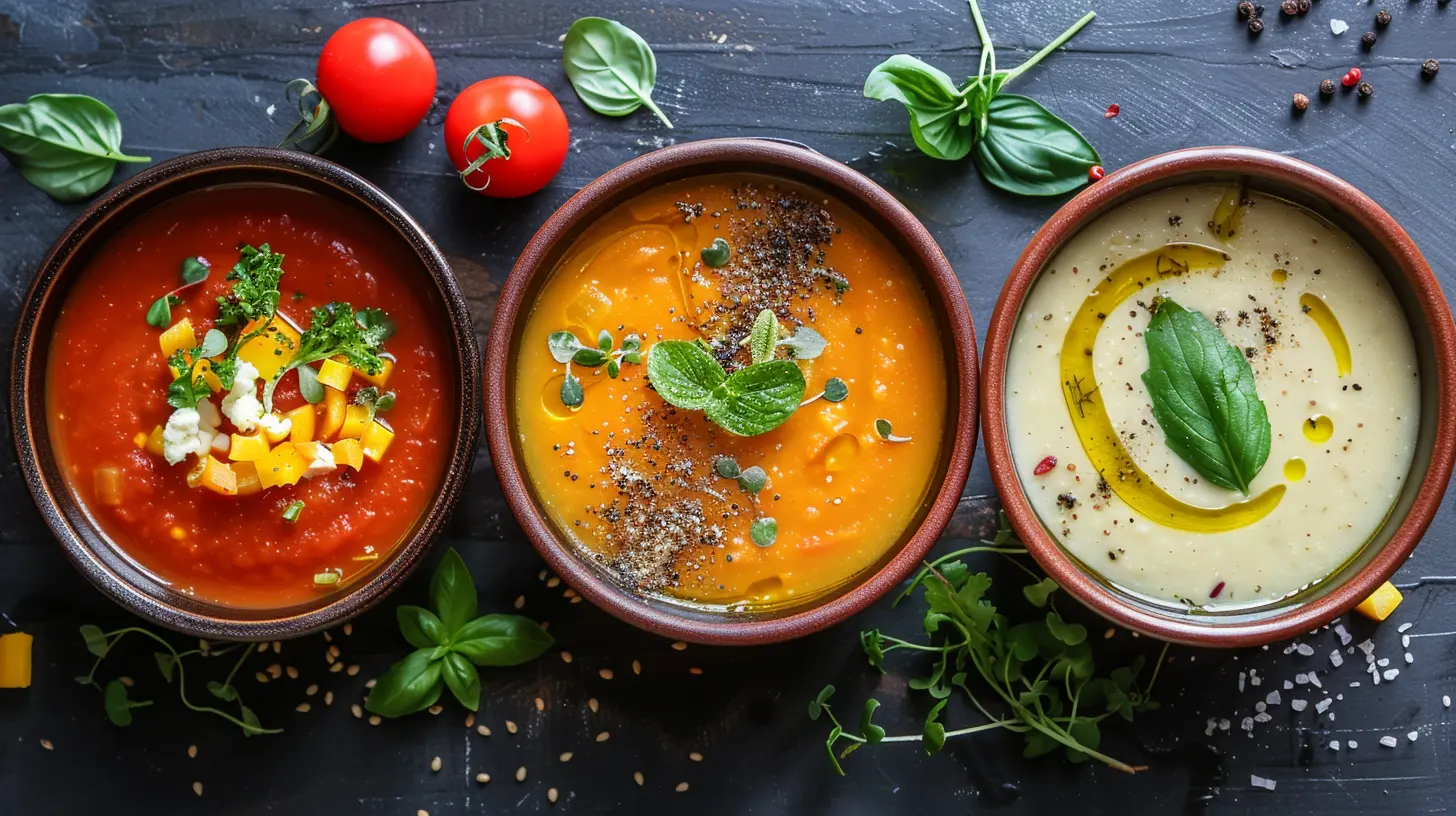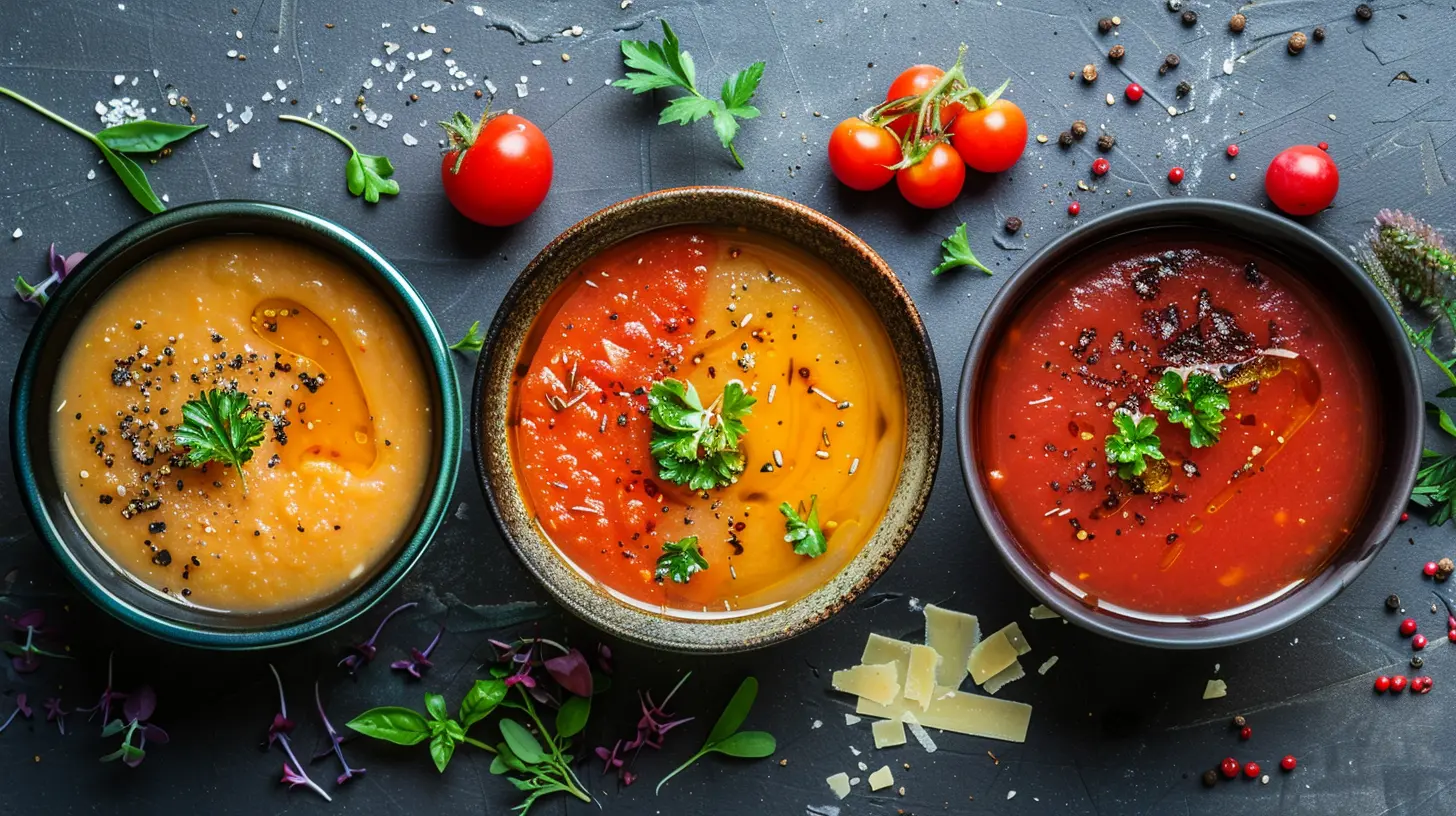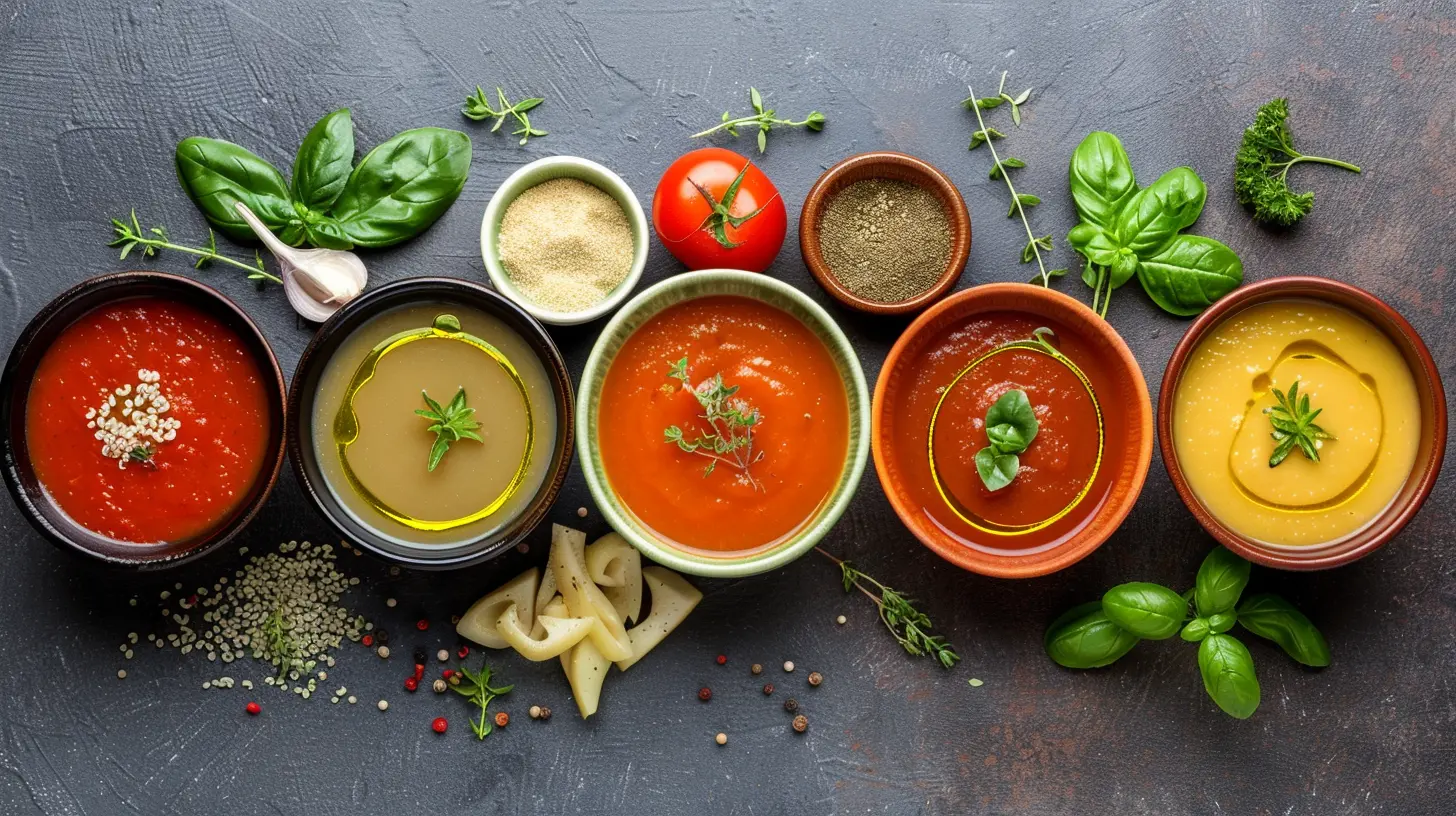Nourishing Soups for Cozy, Healthy Meals
30 August 2025
There’s something magical about a warm bowl of soup. It’s like a big, comforting hug—nourishing not just for your body but also for your soul. Whether it's a chilly winter evening, a rainy afternoon, or just one of those days when you need a little extra comfort, soups are the go-to answer. They’re cozy, satisfying, and when done right, incredibly healthy too.
In this article, we’re diving deep (like a spoon into a hot bowl) into the world of nourishing soups for cozy, healthy meals. Expect some heartwarming recipes, smart nutrition tips, and the little secrets that can transform your soup from “meh” to “more, please!”
Why Soup is the Ultimate Comfort Food (And Health Food!)
Let’s be real—soup doesn’t get enough credit. It’s often the sidekick to bigger meals, but here’s the truth: soup can be the superhero of your kitchen.Think about it. It’s warm, it’s hydrating, it’s packed with nutrients, and it's incredibly versatile. You can sneak in vegetables, legumes, grains, herbs—basically any whole food—and create a bowl that’s both satisfying and healing.
And when we say “nourishing,” we mean soups that fuel your body with real, whole ingredients. No artificial stuff, no sodium-laden cans, just good, honest food made with love.
The Health Benefits of Homemade Soups
Here’s the lowdown on why soups are more than just tasty:1. Easy on Digestion
Warm liquids = gentle on the tummy. Soups help soothe your digestive system, especially if you're battling bloat, indigestion, or recovering from illness.2. Hydration Hero
We’re all about our water goals—but did you know soups can help keep you hydrated, too? Broths and veggie-based soups bring extra fluids into your diet in the most delicious way.3. Packed with Nutrients
From protein-rich legumes to antioxidant-loaded veggies, soups are a great way to get a nutrient-dense meal—without feeling like you're forcing yourself to eat a salad.4. Boosts Immunity
Many traditional soup ingredients like garlic, ginger, turmeric, and bone broth come with immune-boosting powers. They’re nature’s medicine cabinet served hot.
What Makes a Soup "Nourishing"?
There’s a big difference between a chunky homemade minestrone and a cream-laden can of soup from the grocery store. The goal here? Build a bowl of goodness that’s tasty AND health-forward.Here’s what you need to focus on:
- Whole-food ingredients: Think fresh veggies, herbs, lean proteins, legumes, and whole grains.
- Low in sodium: Ditch the salt overload and let the herbs and spices do the talking.
- No artificial junk: If you can’t pronounce it, leave it out.
- Healthy fats: A touch of olive oil or avocado can add depth and creaminess without compromising your health goals.
- Flavorful herbs and spices: Basil, cumin, ginger, rosemary—these don’t just elevate the taste, they boost the nutrition too.
Cozy Soup Ideas That Are Both Healthy and Delicious
Alright, let’s warm things up with some soul-satisfying soup ideas. These aren’t just any soups—these are the ones that’ll have you reaching for seconds (and maybe thirds).1. Hearty Lentil & Veggie Soup
Seriously, this one’s a classic. Lentils are the star here—rich in plant-based protein, fiber, and minerals like iron and magnesium.Pro Tip: Add a squeeze of lemon at the end for a flavor boost and a dose of vitamin C.
Key Ingredients: Brown lentils, carrots, celery, onion, garlic, diced tomatoes, spinach, cumin, and thyme.
2. Creamy Butternut Squash Soup (Without the Cream!)
Silky smooth and naturally sweet—butternut squash is rich in vitamin A and antioxidants. Blend it up with some roasted garlic and a splash of coconut milk, and you’ve got yourself a bowl of fall magic.Bonus: It’s dairy-free, vegan, and still incredibly creamy.
Key Ingredients: Butternut squash, onion, garlic, ginger, veggie broth, coconut milk, nutmeg, and black pepper.
3. Chicken and Wild Rice Soup
Move over, chicken noodle. This protein-packed version with wild rice and bone broth is comforting and incredibly filling. The wild rice adds a chewy, earthy texture that’s just right.Good to Know: Bone broth is great for gut health and joint support.
Key Ingredients: Shredded chicken breast, wild rice, carrots, celery, onion, garlic, bone broth, thyme, and parsley.
4. Spicy Black Bean Soup
Packed with plant-based protein and fiber, this zesty number is perfect for those who like a little heat. Top it with avocado slices and a dollop of Greek yogurt for the ultimate bite.Spice It Up: Add chipotle peppers in adobo for a smoky kick.
Key Ingredients: Black beans, onion, garlic, cumin, paprika, vegetable broth, lime, cilantro.
5. Turmeric Ginger Carrot Soup
Think of this soup as your go-to immunity booster. It’s vibrant, peppery, slightly sweet, and full of anti-inflammatory goodness.Why It Works: Turmeric and ginger together are a dream team for inflammation and gut health.
Key Ingredients: Carrots, ginger, turmeric, garlic, onion, coconut oil, veggie broth, a splash of orange juice.
6. Miso Soup with Tofu and Seaweed
Light, calming, and umami-rich, miso soup is a staple in many Japanese households. It’s great for digestion thanks to its fermented miso base.Heads Up: Use white or yellow miso for a milder flavor and always add miso paste at the end to preserve the probiotics.
Key Ingredients: Miso paste, tofu, wakame seaweed, green onions, mushrooms, and dashi or veggie broth.
Soup-Making Tips for Even Better Batches
Even if you've never lifted a ladle before, don't worry. Making nourishing soup is easier than you think. Follow these quick tips to level up your game:1. Start with a Flavor Base
Always begin with aromatics like onions, garlic, celery, and carrots sautéed in a bit of olive oil or ghee. It’s like building a solid foundation for your house—don’t skip it!2. Layer the Spices
Season as you go! Don’t just dump everything in at once. Taste along the way and adjust. Cooking is an art, not chemistry.3. Let It Simmer Slowly
Good soup takes a little time. The longer it simmers (within reason), the better the flavor develops.4. Use Homemade or Low-Sodium Stock
Your broth is the backbone of the soup. If you're using store-bought, go for low sodium so you have better control over salt content.5. Finish with Freshness
Add a handful of fresh herbs, lemon juice, or a swirl of olive oil right before serving. It adds brightness and a pop of flavor.Making Soup a Staple in Your Meal Plan
Here’s a little secret: soups are perfect for meal prep. Make a big batch, store it in mason jars or freezer bags, and you’ve got lunch or dinner ready for the week.Not only do they save you time and money—but you’re less likely to reach for unhealthy takeout. Total win-win, right?
Pro tip: Invest in a good blender or immersion blender, a quality soup pot, and a stash of mason jars or freezer-friendly containers. Your future self will thank you.
Final Thoughts: A Bowl of Wellness
At the end of the day, soup is more than food—it’s therapy in a bowl. Whether you’re curled up on the couch with a steaming mug or serving it to family gathered around the table, soup brings people together.You don’t need fancy ingredients or Michelin-star skills to make a soup that nourishes your body and comforts your soul. Just start with whole, real foods, layer in some love, and let the flavors come together naturally.
So if you’ve been looking for a simple way to eat better without overcomplicating your life—start with soup. Because something truly special happens when you simmer your way to wellness.
all images in this post were generated using AI tools
Category:
Healthy RecipesAuthor:

Angelo McGillivray
Discussion
rate this article
1 comments
Macey Lewis
This article beautifully highlights the warmth and comfort of nourishing soups. They are not only a delicious way to boost health but also a perfect addition to cozy meals.
September 9, 2025 at 2:54 PM

Angelo McGillivray
Thank you! I’m glad you enjoyed it and appreciate the connection between soup and cozy meals!


